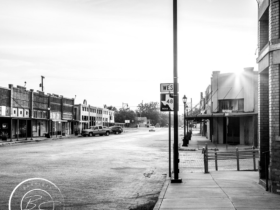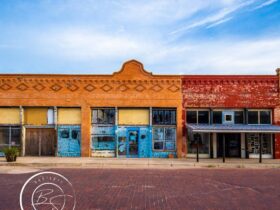Professor Powell Blvd in Bartlett is named for Professor Gentry Powell. Professor Powell was an educator who believed that everyone deserved an equal opportunity to learn.
We are so lucky to have a beautifully preserved Grammar School on Bell Street. This school served the children of Bartlett until 1988, but the building only tells half of the story of the educational changes that occurred in Bartlett. Cryer Street showcases a Historical Marker noting the Booker T. Washington School site, but the exciting history of education in Bartlett dates back even further to the early 1900s.
Like most (probably all) small towns in the early 1900s, Bartlett had segregated educational institutions. In 1909 Bartlett had a six-room, wooden framed building called the “Bartlett Colored School,” which was located on Brook Street and taught children from grades 1st-10th, but no further education was available. When you consider the need for all able-bodied family members to work on the farm during that period, one can only imagine how difficult it would have been for students to get to Temple or Austin just to receive their high school diplomas.
In 1919 that six-room schoolhouse burned down, and a four-room building was commissioned on the same site and built from recycled lumber. Again, leaving little to no opportunity for its attendees to complete their education and receive a diploma. In 1945 things began to improve at the Bartlett Colored School as portions of other schools in the area were moved to the site, adding shop and agricultural education opportunities for the students.
A determined group of parents came together and formed a PTA, once again showing what a forward-thinking town Bartlett was in the 1930s. This group of parents attracted Professor Gentry Powell, and he and his wife moved to Bartlett in 1946 to run the colored school. Professor Powell and his wife saw great things for Bartlett’s education and set out to change the face of education in this town forever.
Professor Powell realized that the most significant obstacle for students to continue their education was transportation. He raised funds necessary to secure a school bus that took the older children to high schools in the larger surrounding cities to earn their diplomas. Within the first year under their leadership, the Powell’s doubled the attendance at their school to 160 students. This jump in attendance gave the Powell’s the leverage they needed to get the Bartlett Colored School accredited to offer classes up through 12th grade, thus giving the students in Bartlett the opportunity to earn their high school diplomas. After achieving Accreditation in 1948, the Bartlett Colored School celebrated its first six graduates in May 1952 with a full-page write-up in the Bartlett Tribune newspaper.
With so many students now attending the school, overcrowding quickly became an issue. In 1949 a new school was built at the historic site on Cryer Street. That larger school served students from Holland, Granger, Davilla, and other surrounding areas that lacked accreditation for their colored schools. The new school was later named Booker T. Washington High School in honor of the contributions Booker T. Washington made to African American education.
Under Powell’s leadership, students excelled at new programs and sports. The football team won state championships, the debate team won local competitions, and students went on to win state spelling bees. All of the children of Bartlett now had opportunities to learn and thrive without having to travel to larger cities each day.
During education integration in 1965, the Booker T. Washington School closed, and all the students and teachers moved to Bartlett High School. Professor Powell continued teaching and transitioning the students to the newly integrated school. Today, when you drive down Professor Powell Blvd, you’ll know that this street was named for a great man as an extension of his legacy. This street connects the old site of the Booker T. Washington school to the new site of integration and forward-thinking Bartlett High School. A place where Professor Powell envisioned equal education for all. It is a place where all children are loved and taught that they can do great things!













Let’s Get Social